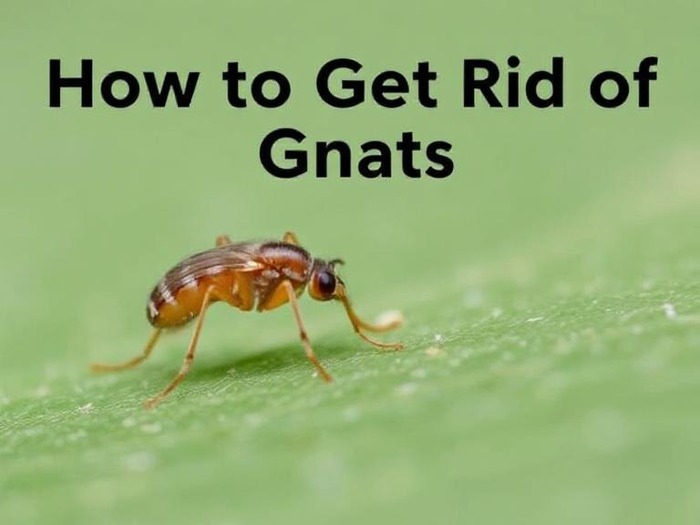Gnats can be an annoying nuisance in any home. Whether they’re buzzing around your kitchen, hovering over houseplants, or invading your fruit bowl, getting rid of gnats requires a strategic and consistent approach. We offer you a comprehensive guide using safe, effective methods that eliminate gnats for good.
Understanding Gnats: Lifecycle, Habits, and Trouble Spots
Gnats, including fungus gnats and fruit flies, thrive in moist, organic-rich environments. They breed in overwatered soil, decaying produce, and near drains. Without proper control, a small infestation can multiply into a big problem fast.
- Fungus Gnats favor houseplant soil. They lay eggs in the damp surface and make their larvae feast on roots.
- Fruit Flies lay eggs on overripe fruits and vegetables. They reproduce rapidly—up to 500 eggs in 10 days.
Step‑By‑Step Gnats Elimination Strategy
1. Identify the Gnat Type
- Hovering over houseplant pots? Those are likely fungus gnats.
- Swarming around the fruit bowl or trash? You’re dealing with fruit flies.
- Inspect the breeding sites. Catching the gnat eggs early minimizes repeat infestations.
2. Remove Breeding Material Immediately
- Remove any overripe or rotting fruit from countertops. Clean the fruit bowl and dispose of spoiled produce.
- Let potted plants dry out between waterings. Replace topsoil if heavily infested.
- Sanitize sink drains. Flush drains with a mixture of boiling water and mild bleach to kill eggs and larvae.
3. Use Homemade Traps
Apple Cider Vinegar Trap
Fill a shallow dish with apple cider vinegar and add a drop of dish soap. Gnats are drawn by the scent but trapped by the soap.
Fruit Trap
Place a small piece of rotten fruit in a jar, cover loosely with plastic wrap, and poke a few holes. Gnats enter and can’t escape.
Sticky Traps
Place yellow sticky cards near infested plants or sinks. They attract gnats with color psychology, not with chemicals.
4. Treat Fungal Breeding Grounds
- Apply a layer of sand or decorative pebbles atop plant soil to deter laying female gnats.
- Drench infested soil with aerated hydrogen peroxide solution (4 parts water to 1 part 3% hydrogen peroxide). This kills larvae without harming roots.
5. Implement Natural, Non‑Toxic Solutions
- Sprinkle diatomaceous earth on pot surfaces. This abrasive powder cuts through soft-bodied larvae.
- Use nematodes (Steinernema feltiae) in potted plants. These biological predators feed on larvae naturally.
- Plant herbs like basil, mint, or lavender near entry points. Their strong aroma repels gnats.
6. Maintain Cleanliness to Prevent Return Infestations
- Clean trash cans frequently. Spray inside with vinegar-water solution to inhibit breeding.
- Keep kitchen counters and floors free of crumbs and spills.
- Check potted plant soil moisture weekly. Water only when surface is dry to avoid standing water.
Targeted Prevention for High‑Risk Zones
Kitchen & Pantry
Store fruits and vegetables in the refrigerator. Keep pantry dry and wipe shelves with mild soapy water.
Bathroom & Drains
Use drain covers and flush with cleaning solution weekly. Remove soap scum and minimize standing water near fixtures.
Living Rooms & Home Office
Avoid having open dirt plant pots. Switch to self-watering systems when possible. Regularly dust areas where gnats may rest.
Professional‑Grade Options (When Infestations Persist)
If gnats persist despite home remedies:
- Use indoor-safe insecticidal sprays or aerosols designed for gnats. Always follow product instructions carefully.
- Consider ultra-low volume (ULV) foggers, especially for large infestations. These reach hidden damp spots effectively.
Quick Reference Table for Gnat Removal
| Step | Action |
|---|---|
| 1 | Identify whether gnats are fungus or fruit |
| 2 | Eliminate breeding sources immediately |
| 3 | Deploy homemade traps |
| 4 | Treat plant soil with safe remedies |
| 5 | Implement natural prevention tools |
| 6 | Clean strategic areas to prevent relapse |
| 7 | Use professional pest control if needed |
Final Thoughts
By targeting gnats at every life stage—from egg to adult—you eliminate their ability to proliferate. A routine combining environmental modification, traps, and natural repellents ensures long-term success. This approach is safe, budget-friendly, and pet-kid friendly, making your living space gnat-free fast.


